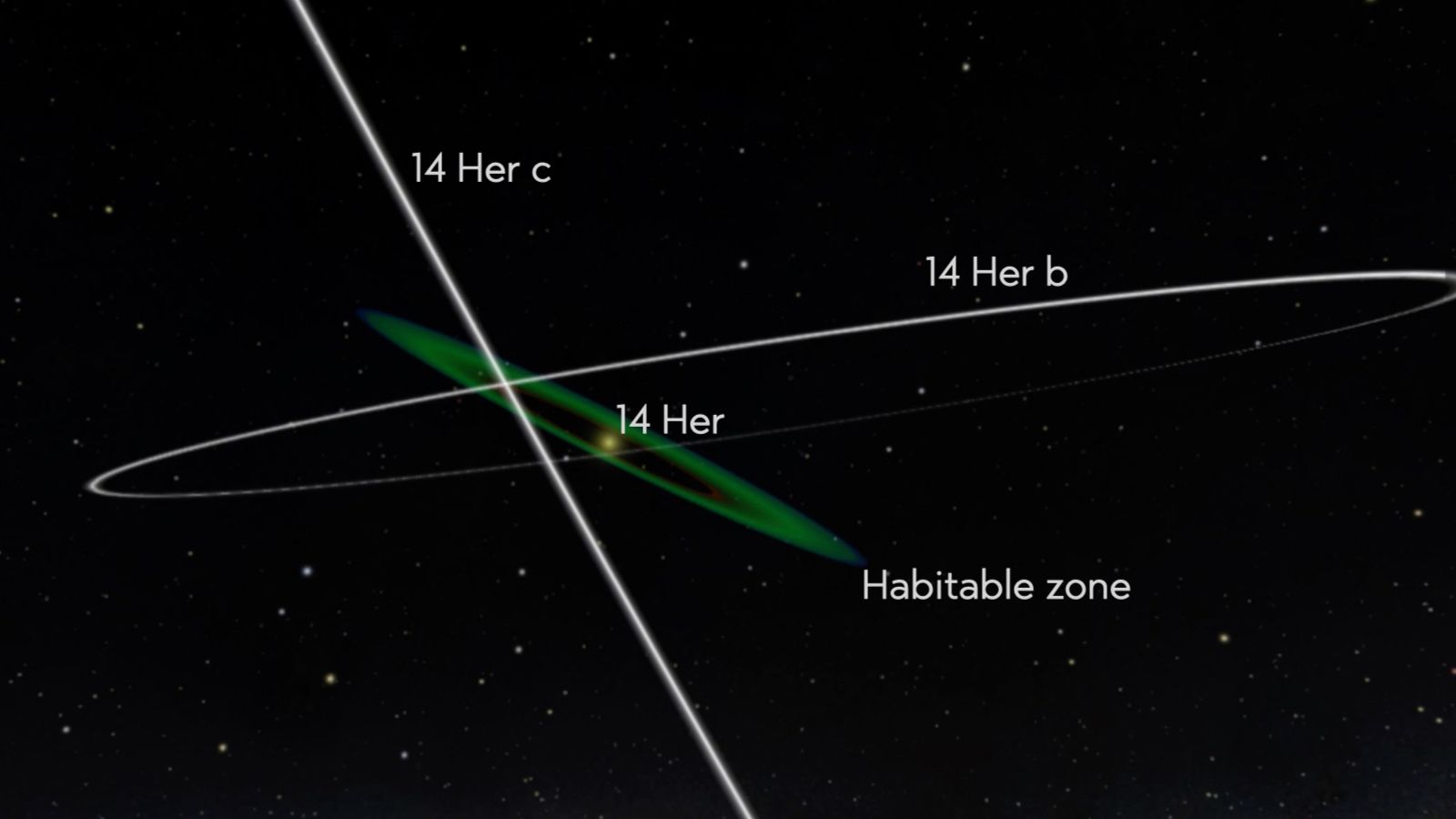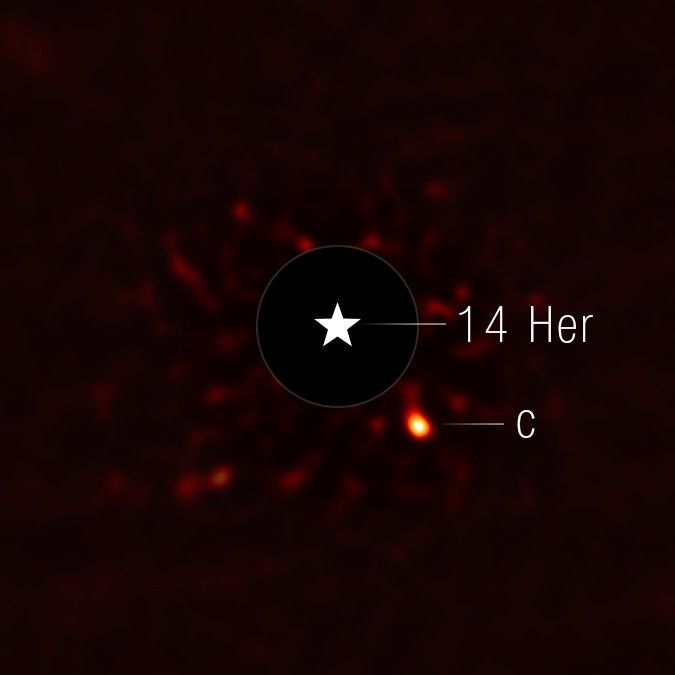Follow us on Google News (click on ☆)
Located about 60 light-years from Earth, the planet named 14 Herculis c (14 Her c) orbits a star similar to our Sun. Thanks to JWST's NIRCam instrument, astronomers were able to observe this planet as a fuzzy orange dot, revealing details about its atmosphere.

The orbits of planets in the 14 Herculis system.
Credit: Deion Desir/AMNH/OpenSpace
With an estimated atmospheric temperature of 26°F (-3°C), 14 Herculis c defies scientists' expectations. Its lower-than-expected brightness suggests unprecedented atmospheric processes, including the presence of gases like carbon dioxide and carbon monoxide.
The planet's peculiar orbit, tilted about 40 degrees relative to another planet in the system, provides valuable clues about the dynamics of exoplanetary systems. This configuration could result from the ejection of a third planet during the system's early stages.
This discovery marks a turning point in exoplanet research, allowing scientists to explore colder and older worlds than ever before. It also highlights JWST's importance in advancing our understanding of the Universe.

Image of exoplanet 14 Herculis c taken by JWST.
Credit: NASA, ESA, CSA, STScI, W. Balmer (JHU), D. Bardalez Gagliuffi (Amherst College)
How does JWST capture images of exoplanets?
The James Webb Space Telescope uses advanced techniques to isolate exoplanet light from that of their host stars. One key tool is the coronagraph, which blocks starlight to reveal surrounding planets.
Planets, much fainter than their stars, emit infrared light that JWST is specially designed to detect. This capability allows astronomers to study planets that would otherwise be invisible.
By combining these technologies with computer models, scientists can not only detect exoplanets but also analyze their atmospheres and composition. This opens new perspectives for understanding the diversity of planetary systems.
Why is 14 Herculis c's orbit so unusual?
The tilted orbit of 14 Herculis c suggests a turbulent history for this planetary system. Astronomers believe gravitational interaction with another planet, possibly ejected from the system, disturbed the orbits of the remaining planets.
Such events are crucial for understanding the dynamics of young planetary systems. They show how planets can migrate or change orbits under the influence of mutual gravitational forces.
Studying these unusual orbital configurations helps scientists reconstruct the history of planetary systems. It also provides better understanding of the processes that shaped our own Solar System.